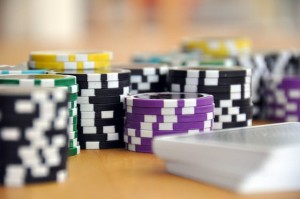The Psychology Behind Slot Machine Design

Slot machines, both online and offline, are meticulously designed to captivate players and keep them engaged. The psychology behind their design is an intricate mix of art and science, crafted to maximize entertainment value and maintain player interest.
One of the most fundamental aspects of slot machine design is the use of sensory stimuli. Lights, colors, and sounds are all strategically implemented to create an immersive experience. Bright, vibrant visuals coupled with celebratory sound effects signal success and are designed to evoke positive emotions. Even near-misses—where the outcome is just shy of a win—are accompanied by winning sounds or animations to offer a sense of potential triumph, encouraging players to continue.
Reinforcement is another key psychological principle used in slot machine design. The intermittent reinforcement schedule, where rewards are given at unpredictable intervals, is a powerful motivator. This unpredictability creates excitement and anticipation, much like the thrill experienced when playing traditional games of chance. Players are more likely to continue playing if they believe a win is just around the corner.
Progressive jackpots capitalize on the power of community and shared experience. The opportunity to win a life-changing amount of money as the jackpot grows keeps players invested and hopeful. Knowing that others are also playing and contributing to the jackpot adds a social and competitive element to the experience, increasing player engagement.
Additionally, themes and narratives in slot design contribute to the psychological allure situs apigacor88. Themes ranging from ancient history to popular movies tap into player interests and preferences, enhancing emotional connection and escapism. Interactive storylines within bonus games further deepen player involvement, making each session feel unique and personal.
The user interface and user experience (UI/UX) design is carefully crafted to ensure ease of use while keeping players engaged. Intuitive controls and seamless navigation allow players to focus entirely on the gaming experience. Meanwhile, features like auto-play create a sense of flow and allow for a more relaxed gaming session, appealing to players who enjoy a passive entertainment experience.
Social proof and leaderboards are additional psychological tools used to influence behavior. Seeing others win large sums can instill a sense of possibility and encourage more play. Leaderboards offer competitive players a chance to achieve status and recognition among peers, adding another layer of motivation.
Ultimately, the psychology behind slot machine design is about creating an environment where players can lose themselves in the experience. By leveraging human psychology's nuances, designers craft games that entertain, engage, and encourage ongoing participation, ensuring sustained enjoyment and involvement.
In summary, the design of slot machines is a complex interplay of sensory elements, psychological principles, and player preferences. Understanding these aspects gives insights into why slots are universally popular and how they create a captivating gaming experience.